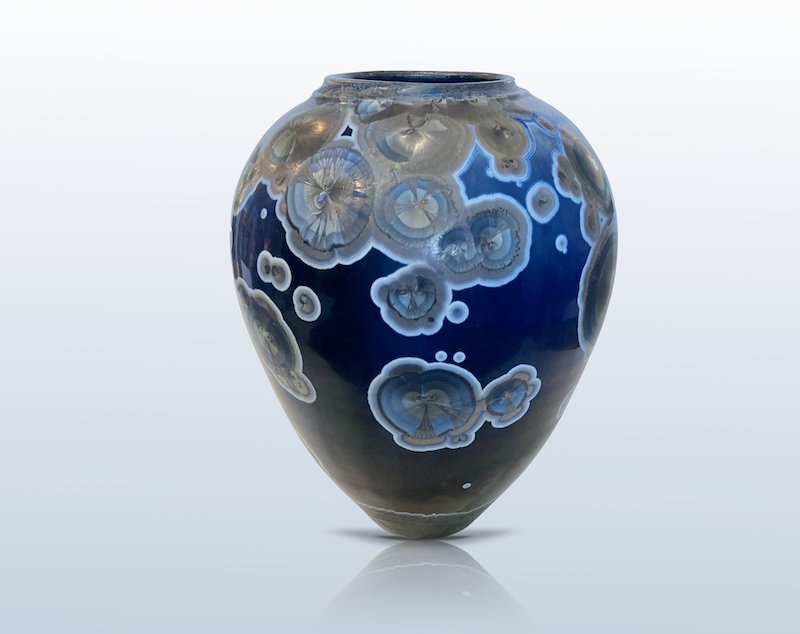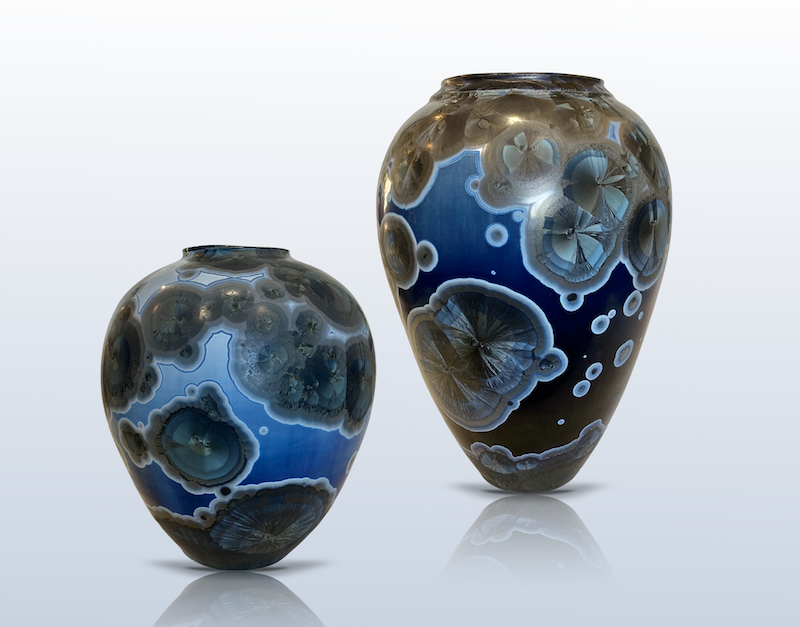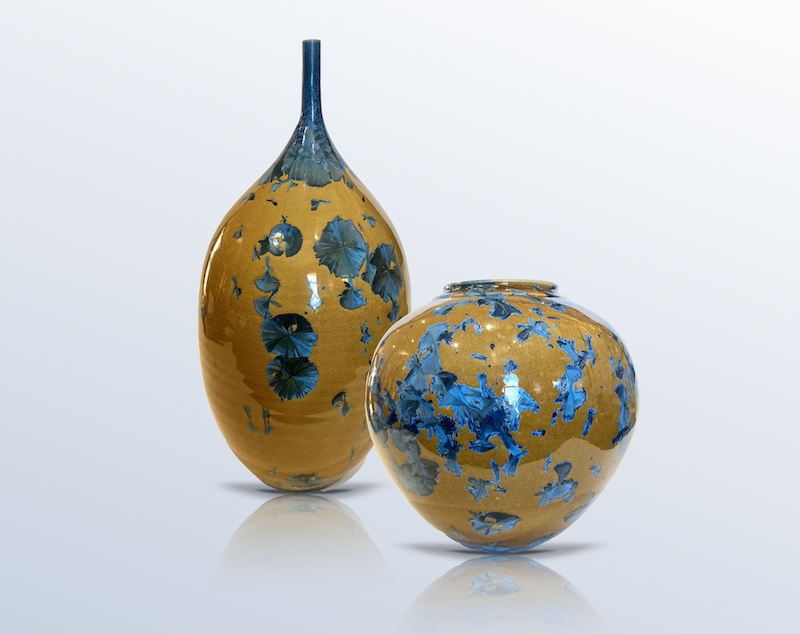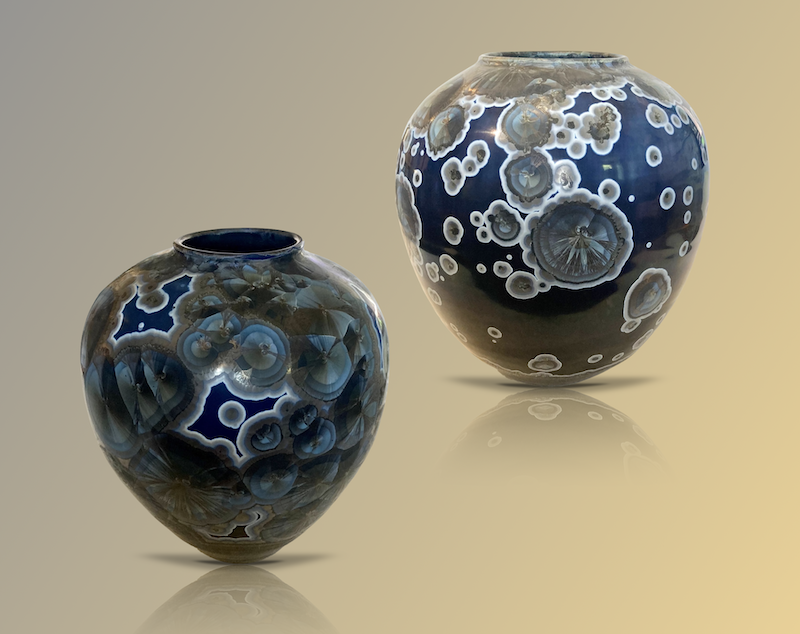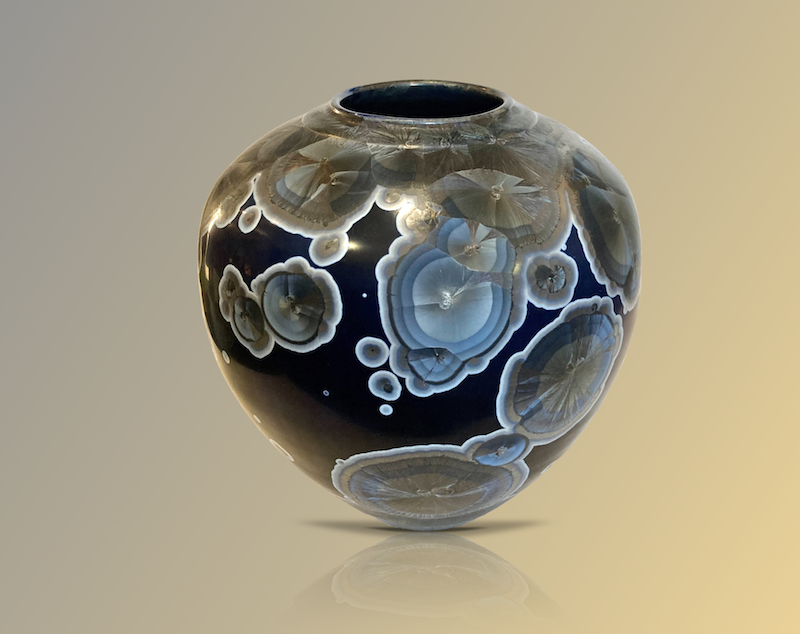
Fabien Damaz hails from Saint Quentin La Poterie (Gard), a village with a pottery tradition going back to the 14th century, which has managed to perpetuate its activity and acquire an international reputation, and it was with his potter neighbours that he learned how to throw.
A stoneware specialist, he has been exploring the fascinating world of crystallising glazes for over 10 years.
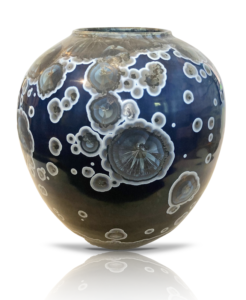
Developed probably in China, and rediscovered in the middle of the 19th century by European manufacturers during research into metallic glazes (Manufacture de porcelaine de Sèvres, then in Copenhagen, Meissen, etc.), this manufacturing technique creates crystals on the surface of the piece which are formed thanks to the zinc contained in the glaze recipe.
This technique is rarely used by ceramists, as it involves many risks and uncertainties due to the countless factors that affect the final result (the choice and combination of glazes, the temperature of the kiln, the arrangement of the pieces inside the kiln, the way the kiln cools, etc.). It requires years of research and experimentation, and the ceramist, even an experienced one, has to accept a degree of uncertainty about how the crystals will develop.
Even for the initiated, the technique does not always give the expected results.
It’s always with the same great emotion that I open my kiln after the firings and discover my new pieces… Magic or the whims of chance mean that, even after meticulous and precise preparation to encourage the development of the crystals, the result is sometimes far from what I expected. Sometimes I’m pleasantly surprised, sometimes I’m disappointed, in which case I have to force myself to use the hammer (*). It’s an ongoing learning process, but although the experience is sometimes painful, it helps you to progress towards perfection “
Fabien Damaz
The crystalline, constellation-like patterns, delicate reflections, subtle hues and unique iridescence make each of the selected pieces an exceptional work of art, a bewitching, poetic world.
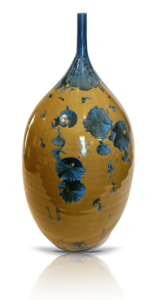
(*) In his book “La Sagesse du Potier” (The Potter’s Wisdom), Jean Girel talks about the demands made on the potter, who must destroy any piece he deems unsatisfactory: “The true potter can be recognised by his ability to break all his mistakes (…). His tools are, in chronological order, the wheel, the kiln and the hammer”.

